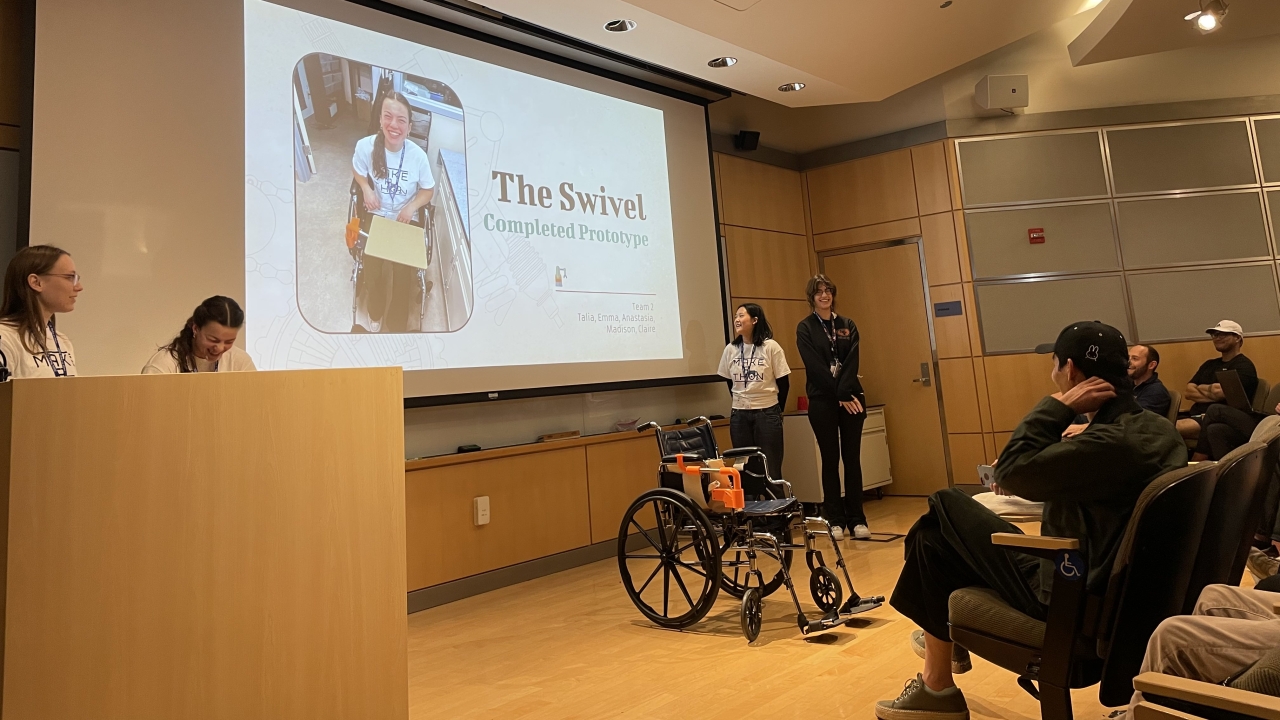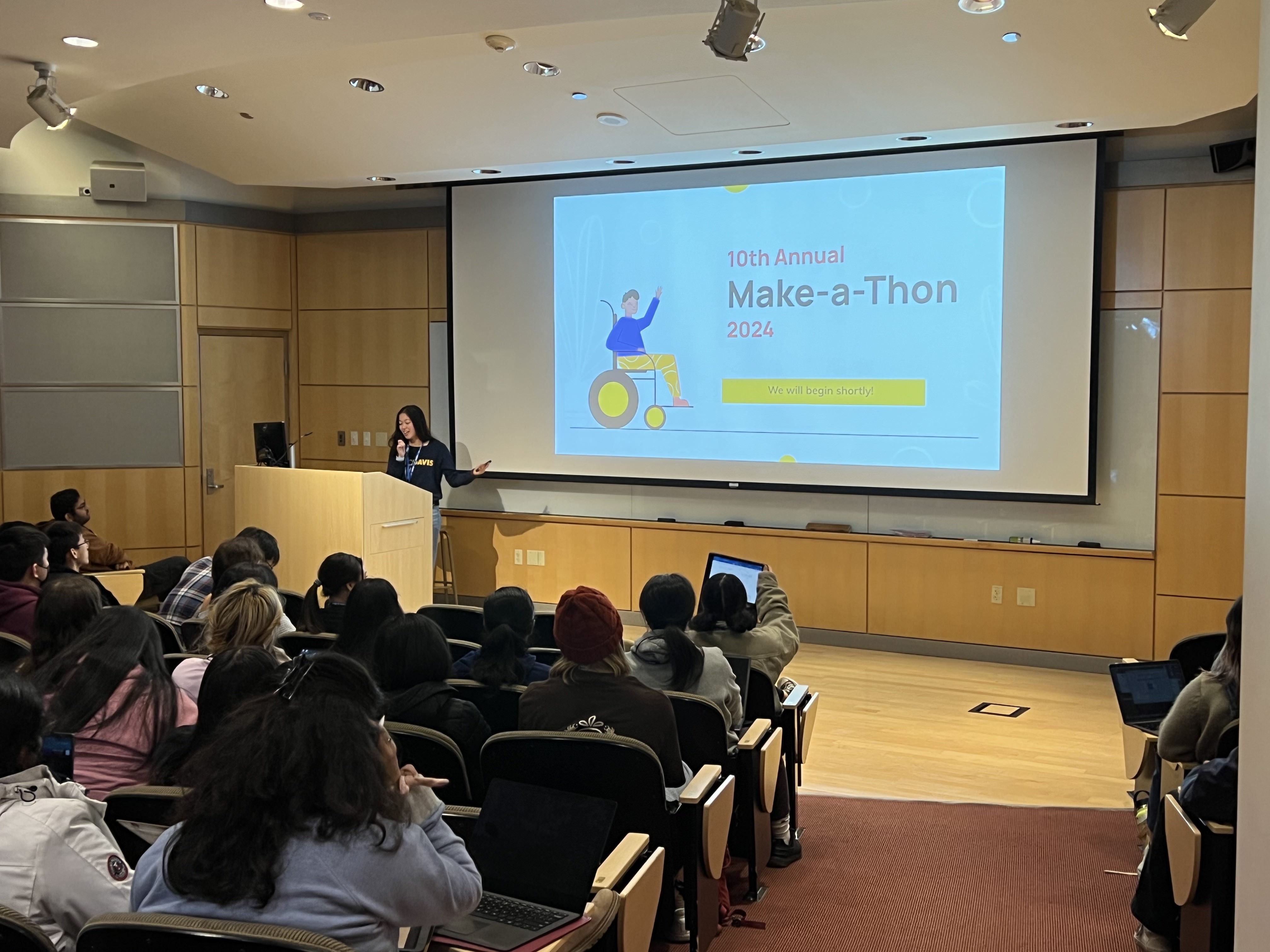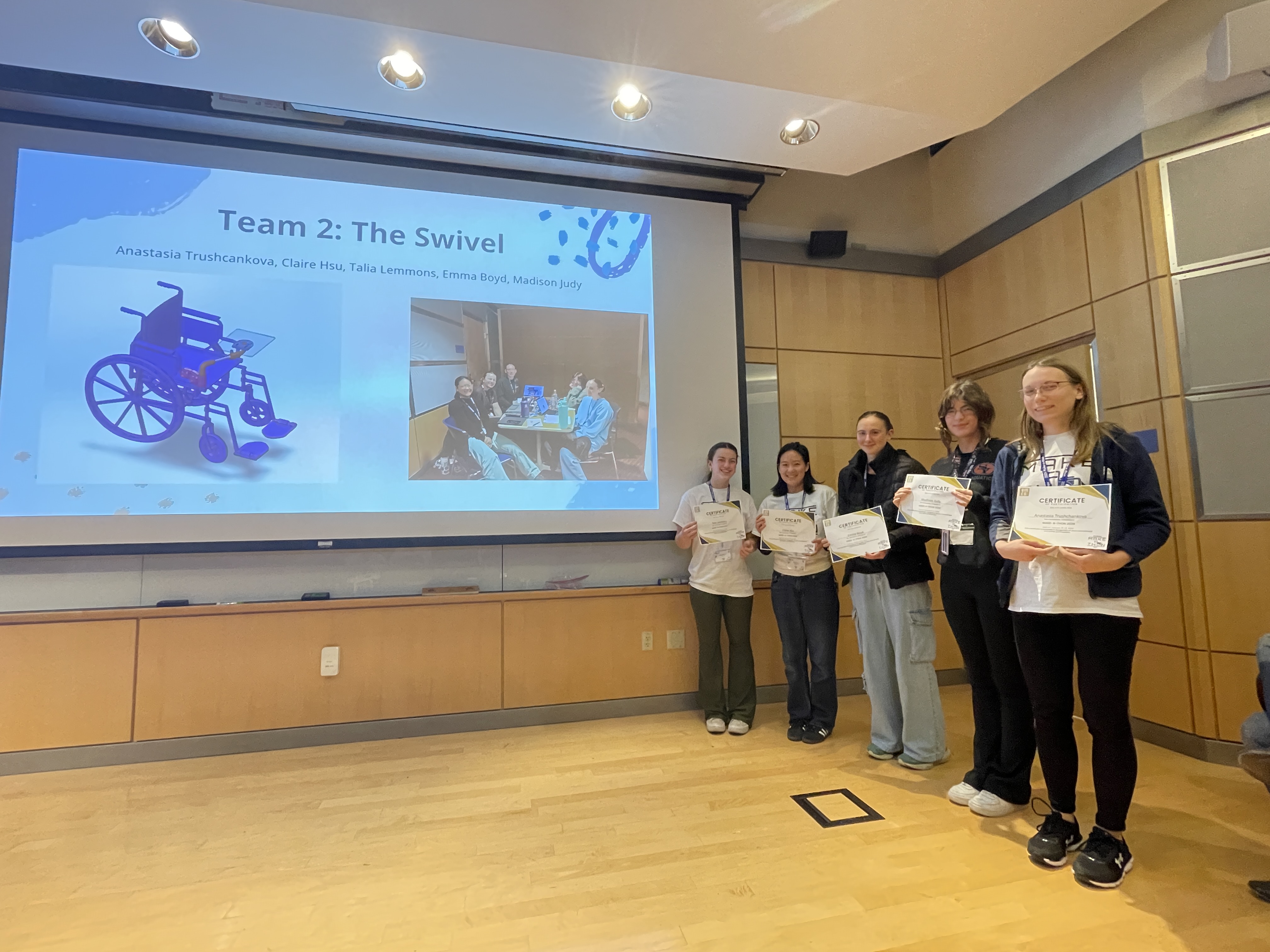
Annual Make-a-Thon Fosters Innovation and Impact in Biomedical Engineering
Biomedical Engineering Society at UC Davis inspires solutions beyond the classroom with annual competition
The Biomedical Engineering Society, or BMES, at the University of California, Davis, provides students with a platform to leverage their classroom knowledge to tackle real-world challenges its annual Make-a-Thon competition.
"Make-a-Thon gives undergraduates a chance to apply the knowledge they're getting in their classes and put it into an actual device," said Tiffany Chan, a third-year biomedical engineering undergraduate student and chair of the event. "It's so exciting to see the unique creativity of each student in the devices they develop."
The competition, held annually in winter quarter, encourages rapid prototyping, thorough research, and teamwork with an adherence to a strict deadline. It spans 48 intense hours in which participants, organized into teams, collaborate to engineer innovative solutions. The 2024 event, hosted at the Genome and Biomedical Sciences Facility, brought together 75 students forming 15 teams.
Bridging Classroom Concepts to Real-World Solutions
Make-a-Thon serves as a launchpad for undergraduates to immerse themselves in the waterfall design process, fostering professional development and teamwork. The impact resonates in the solutions presented, with an emphasis on projects that address real-world challenges faced by the healthcare and biomedical industry.

"Our goal is not just to produce innovative projects but to instill a passion for impactful engineering," Chan explained. "The competition is a launching pad for future biomedical engineers to understand the significance of their work in the broader context."
With a rich history of impactful projects from medical line organizers for NICU beds to oral surgery mouth props during general anesthesia in pets, the competition encourages diverse solutions to a single prompt. Collaborations with health and industry professionals, such as those at competition sponsor Genentech, ensure that the prompts are open-ended, sparking creativity among the participants. The iterative design process, involving discussions with clients, faculty and staff, results in projects that go beyond theoretical concepts, to offer tangible solutions.
Pioneering Innovation in Accessibility
The 2024 competition, under Chan's leadership and with support from other board members, challenged participants to revolutionize accessibility.
"We wanted to tackle a challenge that had a direct impact on the daily lives of students," explained Chan, reflecting on this year's prompt. "The collapsible workspace for wheelchairs aligns with our commitment to inclusivity and accessibility on campus."
This year's prompt challenged teams design a portable, collapsible workspace for wheelchairs, specifically focusing on enhancing convenience and resource availability in UC Davis classrooms.
A team called "The Swivel" won the competition with their innovative design. Their wheelchair featured two stainless steel rods: a vertical rod that slides into a cup holder, allowing for rotation, and a horizontal rod that connects various components. They used PLA filament for 3D printing, ensuring durability and ease of manufacturing. The key element in their design was adding a flange to one component, which improved attachment to the table. The adjustment enhances comfort and usability by fitting better under the user's arm. In addition, the team increased the thickness of another component, improving its overall stability.
Their wheelchair provides a maneuverable work surface and easily adjusts to the user's preferred writing or working angle and distance. Designed for manufacturability, the 3D-printed parts could potentially be manufactured using injection molding. The modular design allows for easy customization of table surfaces of various shapes and sizes compatible with the locking mechanism.
It Takes a TEAM (Lab)
Make-a-Thon teams benefit from the crucial support provided by the Translating Engineering Advances to Medicine, or TEAM, Lab. This state-of-the-art facility, housed on the UC Davis campus and soon Aggie Square, has the resources essential for the prototyping phase. The TEAM Lab has a pivotal role in guiding participants through the intricate process of turning conceptual designs into tangible prototypes.

"In a competition like Make-a-Thon, where innovation is at the forefront, having a facility like TEAM Lab is a game-changer," Chan said. "It's not just about ideation; it's about bringing those ideas to life, and TEAM Lab provides the tools and knowledge needed for this critical transition."
For students like Chan and those on "The Swivel," the Make-a-thon is a weekend-long launch pad for the many applications of their valuable skills in biomedical engineering.
"The Make-a-Thon is not just a competition; it's a transformative experience for students," said Chan. "It pushes them beyond the boundaries of textbooks, encouraging them to think innovatively and collaboratively."




